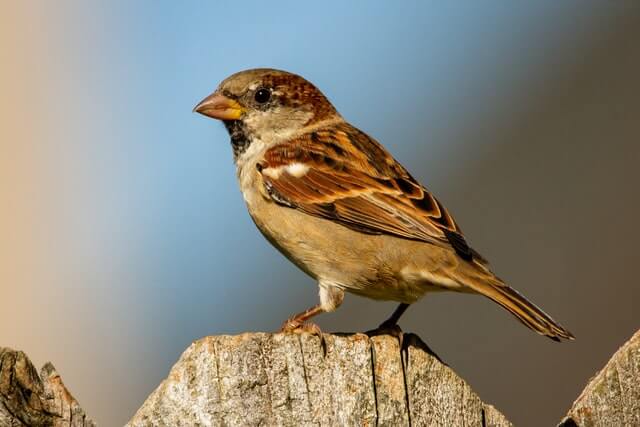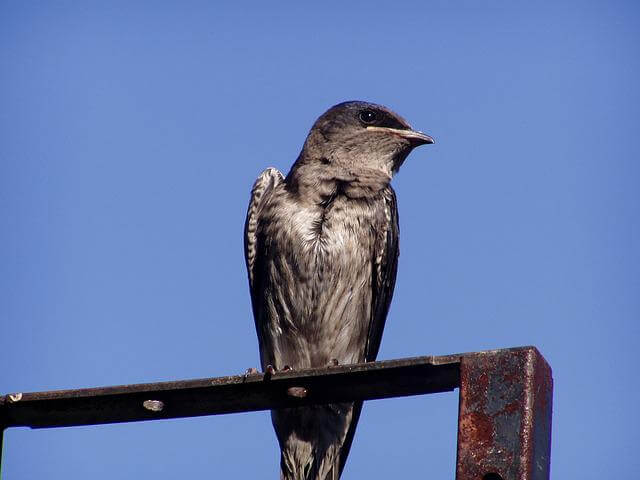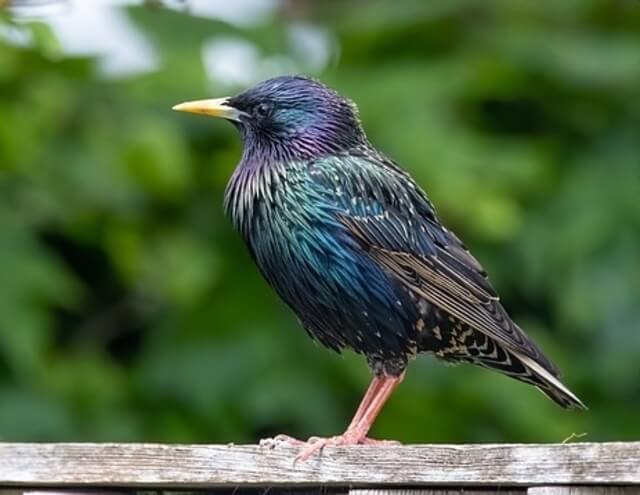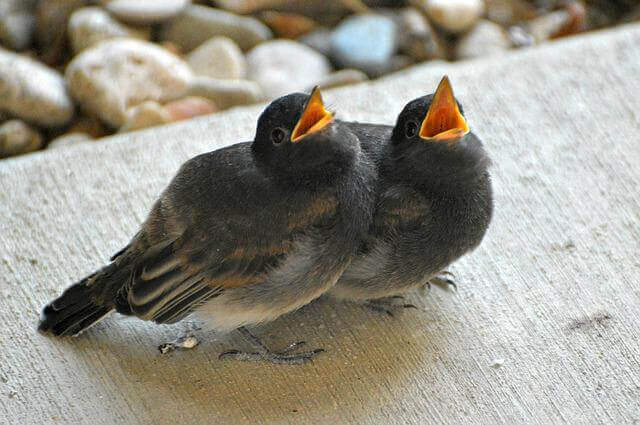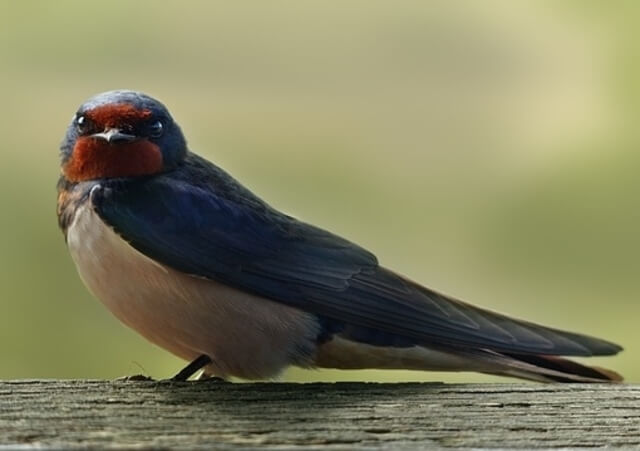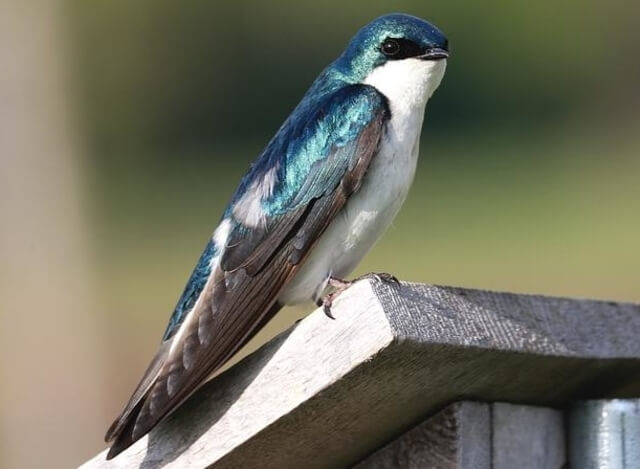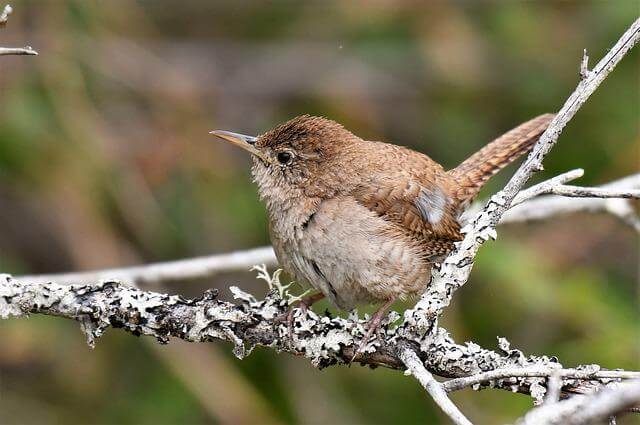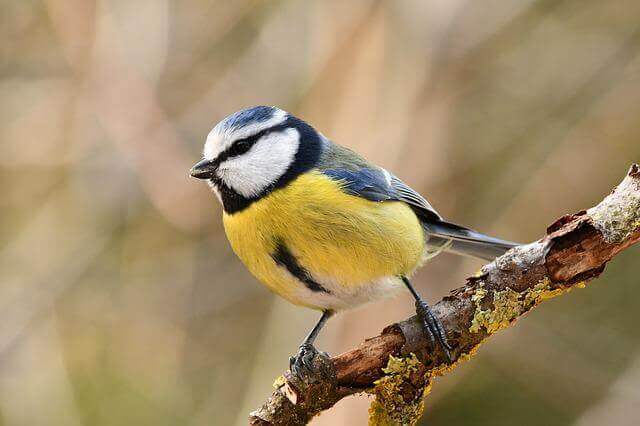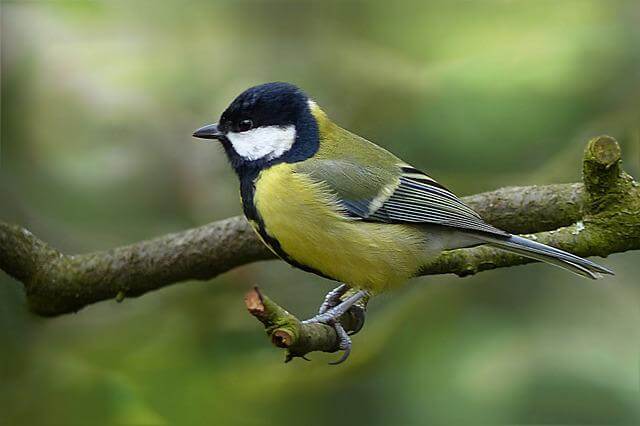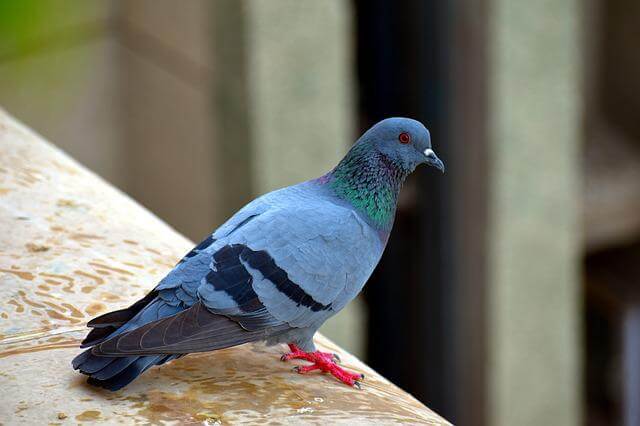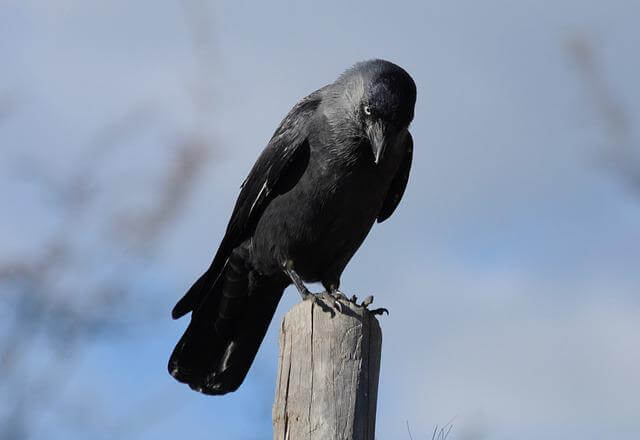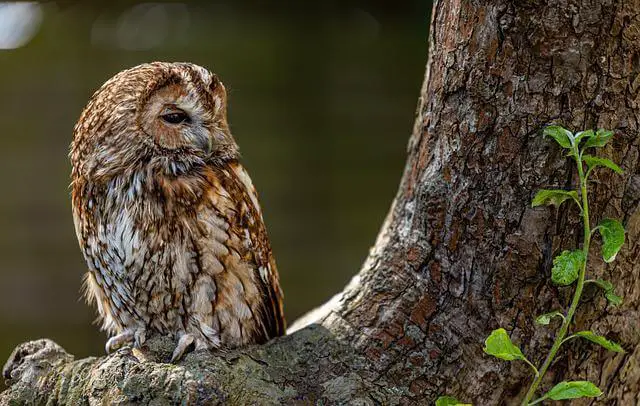Welcome to our exploration of “17 Birds That Nest Under Eaves.” Dive into the intriguing world of these feathered neighbors as we uncover their habits and share effective strategies for peaceful coexistence. Whether you’re seeking understanding or solutions, join us on this journey for insights and practical tips.
Table of Contents
- 1 Types of Birds That Nest Under Eaves
- 2 Birds nesting in eaves damage
- 3 How to deter birds from nesting under eaves?
- 4 How to remove birds from inside roof?
- 5 Birds in gutter at night
- 6 Birds nesting in fascia
- 7 How to install bird netting under eaves?
- 8 How to stop swallows nesting under eaves?
- 9 Jackdaw nesting in roof
- 10 How to keep birds from building nests under eaves?
- 11 Author
Types of Birds That Nest Under Eaves
House Sparrow
The House Sparrow is a small, brown bird that is native to North America. It is found in a variety of habitats, including urban areas, and prefers to nest in cavities under eaves or in other sheltered locations.
The House Sparrow’s diet consists mostly of seeds, but it will also eat insects and other small invertebrates. Breeding season typically begins in late winter or early spring, and the female typically lays 4-6 eggs.
House Martin
The House Martin (Delichon urbica) is a small passerine bird that is widespread in Europe, Asia and North Africa. It breeds in colonies, typically under the eaves of houses. The nest is an open cup made of mud and lined with grass or feathers.
Usually, 4-6 eggs are laid and incubated by the female for 14 days. Chicks are cared for entirely by both father and mother until they leave the nest at 18 days. House martins feed on insects, which they catch in flight. They often feed near water, where there is an abundance of aerial insects.
Purple Martin
Purple Martins are migratory birds that spend their winters in South America and migrate to the United States and Canada each year. They prefer to live in open areas near water, such as marshes, swamps, or wetlands.
In the summer, they live in colonies and build their nests together. Purple martins eat mostly insects, but will also consume fruit and berries. They have been known to nest under eaves or other overhangs on buildings.
Common Starling
The Common Starling is a medium-sized bird that ranges in size from 8 to 9 inches long. They have black feathers with a iridescentgreen and purple sheen, and a yellow beak. These birds are found in open areas near water, such as fields, marshes, and wetlands.
They eat insects, seeds, fruits, and small amphibians. Common Starlings build their nests under eaves or other sheltered areas near the ground. Up to six eggs can be laid in a clutch.
Cliff Swallow
The Cliff Swallow (Petrochelidon pyrrhonota) is a migratory bird that can be found in North America and parts of South America. They breed in colonies, often building their nests under eaves or other overhangs, building their nests out of mud pellets.
Cliff Swallows are aerial insectivores, meaning they catch most of their prey while flying. Their diet consists of mostly insects, but they will also eat some spiders and small lizards. Cliff Swallows typically have two broods per year.
Barn Swallow
The Barn Swallow is a common and widespread summer resident across North America. They can be found in open country near water, such as farmlands, pastures, and marshes. Barn Swallows build their nests primarily under eaves of buildings, but also in other sheltered sites such as cliffs, caves, and bridges.
They are aerial feeders that catch insects in flight. Their diet consists mostly of flying insects, including mosquitoes, flies, beetles, and moths. Barn Swallows typically lay 4-6 eggs in a clutch. The eggs are incubated for about two weeks, and the young birds fledge about three weeks after hatching.
Tree Swallow
The Tree Swallow (Tachycineta bicolor) is a passerine bird found throughout North America. They breed in open habitats such as meadows, prairies, and marshes. They are generally migratory, wintering in the southern U.S., Central America, and South America.
The Tree swallow is only about 8 inches in length and has a wingspan of 12 inches. They have blue upperparts, white underparts and a forked tail. Tree Swallows mainly eat insects, but will also take spiders, small reptiles, and amphibians. They often nest under eaves or in other sheltered locations.
House Wren
The House Wren is a small bird that is found in North America. They are around 5.5 inches long and have a brownish color. The house wren is known for its habit of building nests in odd places, such as under the eaves of houses. They are also known for their singing, which can be heard throughout the day.
House wrens eat insects and spiders, but will also eat fruit and seeds. They are monogamous and both the male and female help build the nest. The female lays 4-5 eggs and incubates them for around two weeks. The chicks stay in the nest for another two weeks before fledging.
Eurasian Blue Tit
The Eurasian Blue Tit (Cyanistes caeruleus) is a small passerine bird in the tit family. It is a resident breeder in much of Europe and Western Asia. The blue tit is a distinctive species, with its bright blue and yellow plumage. The range of the blue tit extends from Spain and Portugal north to the British Isles, Scandinavia and east to the Ural Mountains. In the south, its range reaches into northern Africa.
The species is found in open woodlands, parks and gardens. The diet of the blue tit consists mainly of insects, but also includes spiders, worms and small reptiles or amphibians. Blue tit are cavity nesters, nesting in tree holes, old woodpecker nests, nest boxes, eaves and other outbuildings. Up to six eggs are laid in each brood.
Great Tit
Great Tit are widespread and common throughout Europe and into Asia. In the UK, they are mostly resident, although there is some movement of birds between different parts of the country.
They breed in a variety of habitats including deciduous and coniferous woodland, parks, gardens and even in buildings, nesting under eaves or in nest boxes. Great Tit are omnivorous birds and eat a wide range of foods including insects, spiders, small reptiles, amphibians, seeds, nuts and berries.
Feral Pigeon
Feral pigeons are descendants of the Rock Dove and have a natural range that includes Asia, Europe, North Africa, and the Middle East. They were introduced to North America in the early 1600s by European colonists and have since become established in many urban areas.
These birds typically nest in colonies under eaves or other sheltered locations. Feral pigeons feed on a variety of items, including seeds, grains, fruits, and insects. In urban areas, they often rely on human-provided food sources.
Jackdaw
The Jackdaw is a member of the crow family and is found throughout Europe. In the UK, they are most commonly found in open country, farmland, towns and cities. They are also known to nest under eaves and in roof spaces of buildings. Jackdaws are omnivorous and eat a variety of items such as insects, small mammals, eggs, carrion and fruit.
They are also known to scavenge for food around humans. Jackdaws typically breed from March to June. The nest is made from sticks and is lined with grass, feathers or hair. The female typically lays 4-5 eggs, which are incubated for 16-18 days. The chicks fledge after around 28 days.
Barn Owl
The Barn Owl (Tyto alba) is a common, widespread species throughout the world. In North America, they are most commonly found in open country and agricultural areas, but they also live in a variety of habitats including forests, marshes, and even deserts.
Barn Owls are strictly nocturnal and feed on small mammals such as rodents, bats, and insects. They typically nest in barns or other outbuildings, but will also use cavities in trees or cliffs.
Tawny Owl
The Tawny Owl is a medium-sized owl found in woodlands across Europe and Asia. They are usually around 15 inches in length and have a wingspan of about 40 inches. The body of the tawny owl is mostly brown, with some white spots throughout. Tawny owls are generally nocturnal, hunting at night for small mammals, birds and insects.
They can be very opportunistic, taking prey as large as rabbits or as small as earthworms. They typically nest in tree cavities, but will also use other sheltered areas such as eaves or holes in walls. The tawny owl population is believed to be stable, and they are not considered to be threatened by extinction.
Chimney Swift
The Chimney Swift is a small, swallow-like bird that is found in North America. They are common in the eastern and central United States, as well as southern Canada. They are also present in parts of Mexico. Chimney Swifts prefer to live in open areas near woods or water.
They often build their nests under eaves or in other man-made structures. Chimney Swifts eat mostly insects, but they will also eat small amounts of fruit. These birds are monogamous and both the male and female take care of the young.
Pacific Swift
The Pacific Swift is a small, swallow-like bird that ranges throughout much of the Pacific Rim. They prefer to live in open areas near water, such as wetlands and estuaries, but can also be found in fields, pastures and even urban areas.
These birds feed on insects, which they catch in midair. They build their nests under eaves or other overhangs, where they are safe from predators. The Pacific swift lays 2-5 eggs, and both parents help to incubate them and care for the young.
Common Swift
The Common Swift (Apus apus) is a small, aerial bird that is found in Europe and North Africa. It is the only member of the Apodidae family. Swifts have short legs and a long, thin body. They are dark brown or black with white markings on the wings and tail.
Common Swifts can reach speeds of up to 111 kilometers per hour (69 miles per hour). They spend most of their time in the air, feeding on insects. Swifts build their nests under the eaves of buildings or in crevices in rocks. They lay two to four eggs and both parents help to care for the young.
Birds nesting in eaves damage
While birds nesting in eaves is a common and beautiful sight, the resulting damage can be costly. Eaves are designed to protect the roof and walls of a building from the elements, so when they’re used as a birdhouse, it can cause water damage, leaks, and even structural damage. In addition, birds can also leave droppings on cars or people below, creating an unsanitary environment.
How to deter birds from nesting under eaves?
One way to deter birds from nesting under your eaves is to install a metal barrier. This can be done in the form of a wire mesh or netting that hangs down from the roofline, extending out several feet. The barrier will prevent the birds from landing and building their nests, as they will not be able to grip the surface.
Another option is to install a motion-activated sprinkler system. When the birds land on the roof or near the eaves, the sprinklers will go off, sending them scampering away. Be sure to place the sprinklers, so they will not wet your home’s siding or windows.
Finally, you can try using bird deterrents such as fake owls or scarecrows. These can be placed near the area where the birds are nesting, and they will frighten them away.
How to remove birds from inside roof?
There are a few ways to get rid of birds that have made their home in your roof. One way is to scare them away with loud noises or bright lights. Another way is to use a repellent, such as predator urine, that will make the birds uncomfortable and encourage them to leave. A third option is to trap the birds and release them outside.
If you decide to trap the birds, it is important to use a humane trap that will not hurt them. If there are nests or a lot of droppings, it’s best to call in a professional. A professional will have the right tools and experience to remove the birds and clean up any mess they’ve made.
Birds in gutter at night
Birds in the gutters at night can be a problem for homeowners. Gutter systems are designed to carry rainwater away from a home, but when they become clogged with leaves, twigs, and other debris, they can no longer function properly. This can cause water to back up and flow under the roof shingles, which can lead to water damage.
In addition, birds often seek refuge in gutters during bad weather, and if there is a lot of debris in the gutter, they may not be able to get out. This can lead to them becoming trapped and drowning.
It is important to keep your gutters clean so that they can do their job properly. You can either do this yourself or hire a professional to do it for you.
Birds nesting in fascia
Birds nesting in the homes fascia is a common problem during the springtime. The birds will seek out any opening they can find to build their nests, and the fascia of a home is a perfect spot. There are several ways to prevent this from happening, but it is important to take action before the birds have a chance to nest.
One way to keep the birds out is to install metal flashing along the edge of the roofline where the fascia meets the roof. This will create a barrier that the birds cannot cross.
Another option is to install a wire mesh screen over the opening. This will also keep the birds out, but it may be less aesthetically pleasing. If neither of these options are feasible, then you can try to deter the birds with noise or motion sensors.
How to install bird netting under eaves?
Installing bird netting under eaves is a great way to keep unwanted birds away from your property. It is important to install the netting properly so that it will be effective in keeping the birds out. Here are some steps to follow when installing bird netting under eaves:
1. Decide where you want to install the netting. The best place to put it is near the roofline, where the birds are likely to be landing.
2. Measure the area and cut the netting to size using scissors or a knife. Make sure that the netting is long enough to cover the entire area that you want to protect.
3. Attach the netting to the eaves of your house using staples or nails. Make sure that it is secure so that it won’t blow away in strong winds. Make sure there are no gaps between the netting and the roofline.
4. Weigh down the edges of the netting with rocks, bricks, or other heavy objects. This will help keep birds from getting under the netting.
How to stop swallows nesting under eaves?
One of the most common springtime sights is a family of swallows nesting under the eaves of a house. While their aerial acrobatics and cheerful chatter are entertaining, having these birds take up residence can be a nuisance. Here are a few tips for discouraging swallows from nesting under eaves:
1. Make sure there are no accessible entrances to the attic or roof. Close off any gaps around vents, chimneys, or rooflines with wire mesh or other deterrents.
2. Install a fake owl or hawk decoy near the nest site. These predators are known to scare away nesting birds.
3. Hang shiny objects near the nest site. Swallows are afraid of reflections and may be discouraged from nesting if they see too many mirrors or chrome surfaces nearby.
4. Apply a commercial bird repellent to the surface of the eaves.
Jackdaw nesting in roof
Jackdaws are known for their intelligence and acrobatic abilities. They are also one of the few bird species that nest in roof spaces. If you have a jackdaw nesting in your roof, it is important to understand how to best protect your home and the birds.
Jackdaws will typically choose a roof space that is enclosed on three sides and has an opening large enough for the birds to fly in and out. They will also look for a space that is sheltered from the wind and rain.
If you have a jackdaw nesting in your roof, you can help protect your home by covering the opening with wire mesh or netting.
How to keep birds from building nests under eaves?
There are a few things homeowners can do to keep birds from building nests under eaves. One is to install a metal guard, which will stop the birds from being able to build a nest.
Another option is to install a wire mesh screen over the eaves, which will also keep the birds from nesting. Finally, homeowners can install a bird deterrent, such as a plastic owl or hawk, which will scare the birds away.


